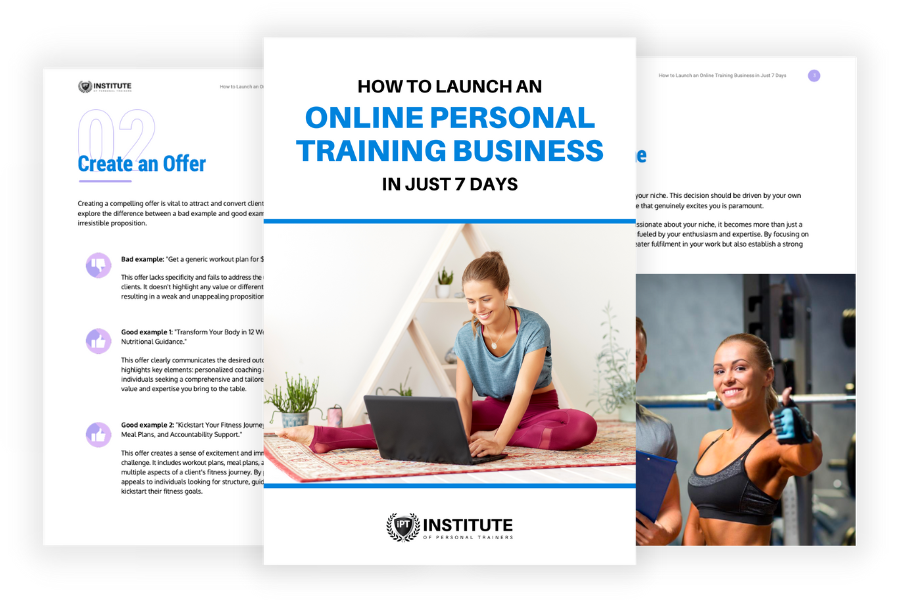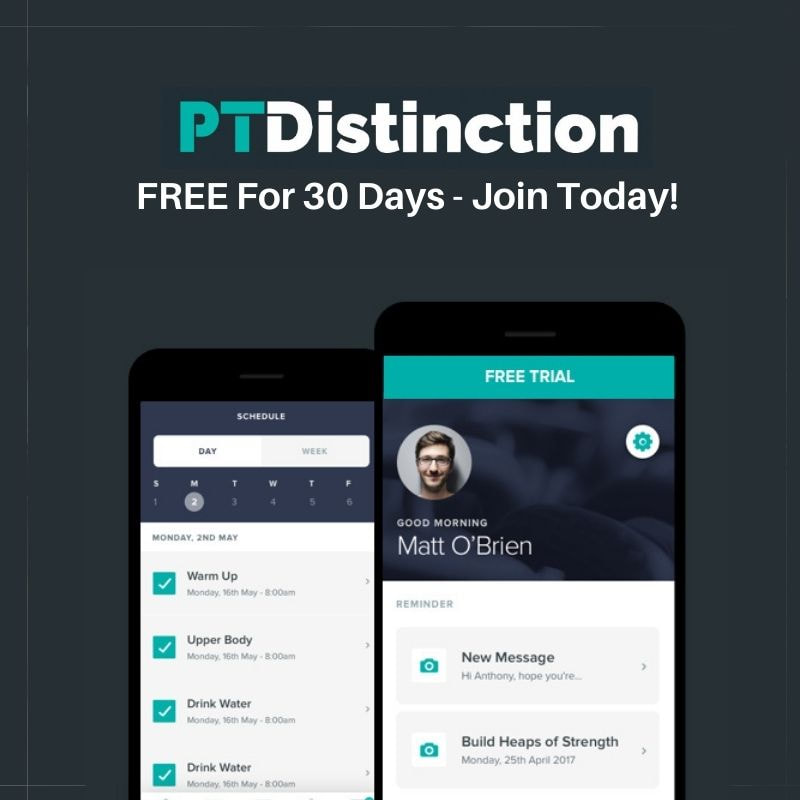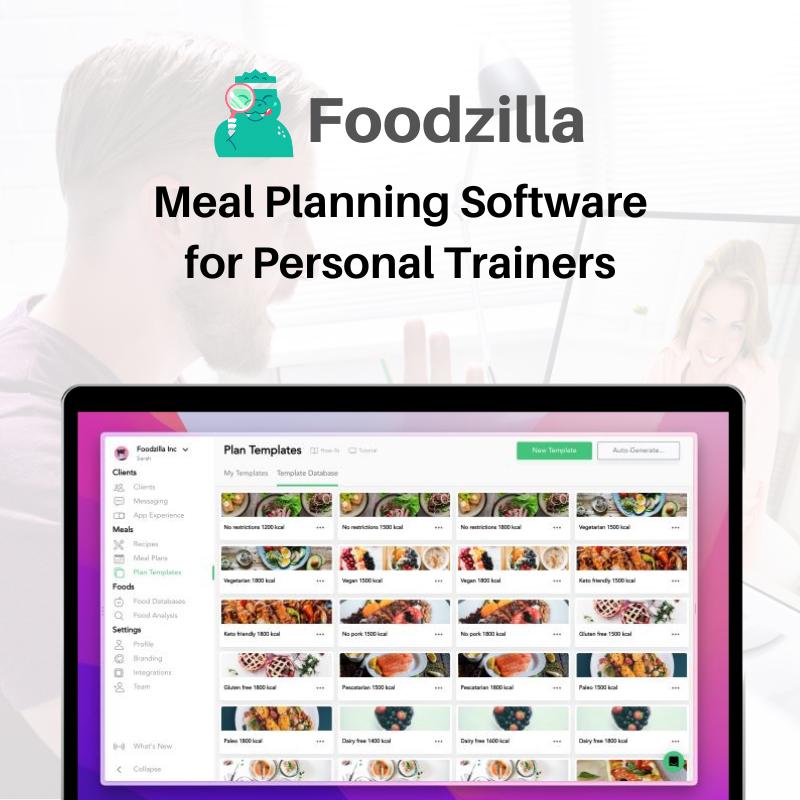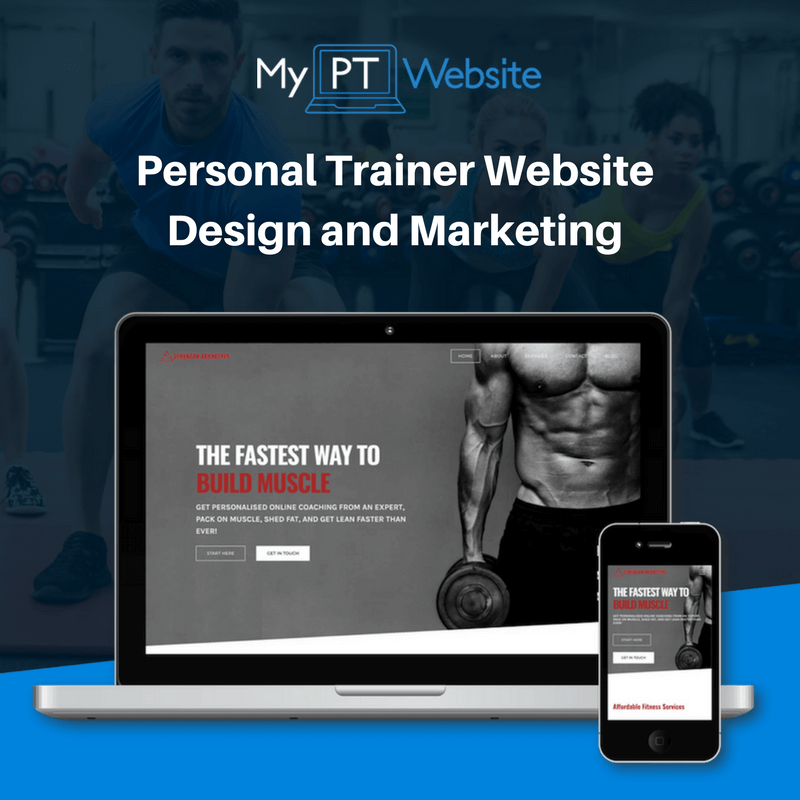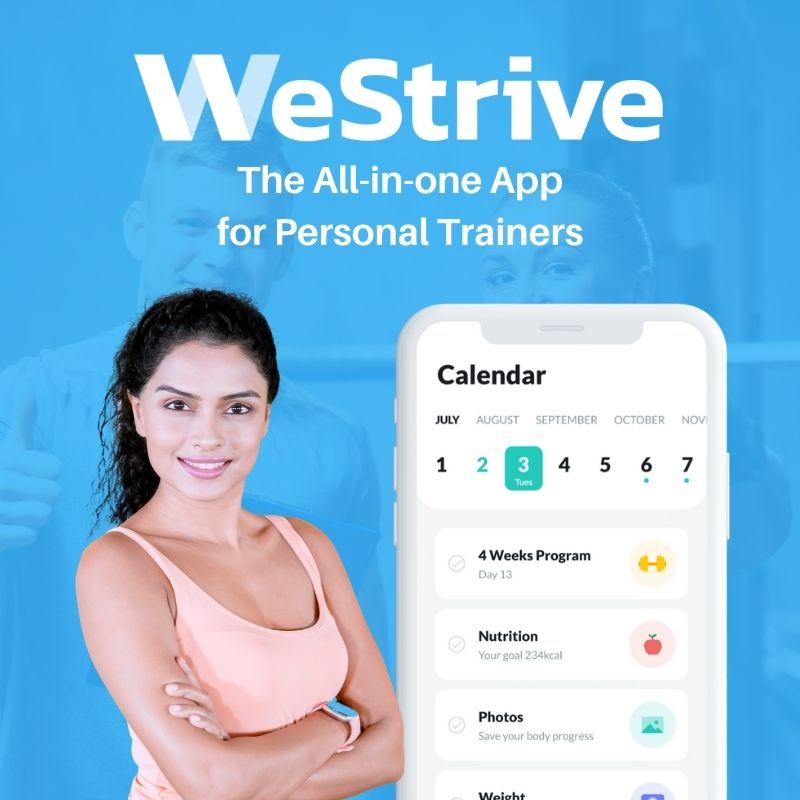|
FREE GUIDE: HOW TO LAUNCH AN ONLINE PERSONAL TRAINING BUSINESS
IN JUST 7 DAYS
✓ The new, better way of launching an online business
✓ The fastest way to create in irresistible offer ✓ A simple system to sell to clients who are interested |
THERE IS NO SUCH THING AS a 'typical' training sessionEveryone has different aims and goals, and a certain string of exercises that have worked really well on one client, but generally wont have the same effect on another. The true professionals amongst you keep revisiting your client health Questionnaire's or Lifestyle Questionnaire forms to refresh both yours and your client's memory of the initial goals that were set out at the start of the client journey. There is one simple question to ask yourself for any exercise prescription, "Why?" What is it that you're trying to achieve?. When you want to specialise in your field (and you should), not only do you want to stand out above the rest but the continued professional development courses start to become more labour intensive with your own reading to do and mixed in with "less" practical. You will always have to adopt the question of..."Why?". So, going back to your awesome workout (that induced a rather uncomfortable 2 day DOMS period). It felt amazing for you to let off some steam and lift those pair of 15kg dumbbells 100 times, but how is what you feel a great way to train transferable to your clients? Why did you choose to follow a German Volume programme (10 x10)? What is it achieving? How will this benefit Andrew who you have next in at 11am? Asking yourself these questions as a Training Professional will help to bring about self-reflection and secondly, will help you to keep on track with your exercise prescriptions for each of your clients who have their own goals and aims. a Trainer's checklist IS AS SIMPLE AS - 'W.H.A.T'1. What. What are your client's goals? Ask your client why this is important to them. This will check for understanding and hopefully draw out the passion behind their prompt to come and see you and do something about this goal which is important to them. They will then use this as motivation in and outside the gym to achieve their goals. 2. How. How physically and mentally fit is your client? You need this valuable data at the start of your client's journey so that not only will you be able to prescribe exercise that they will find not too difficult from the start, and even risk putting them off in doing so, but you can then use this data in 4-6weeks time. Re-test your client on physiological tests such as an Astrand Treadmill test, or even circumference measurements, and together you can measure how far they have come on their journey so far. 3. Action. You have the data from the initial assessment session, how are you going to action your strategy? You now know your client's weaknesses and areas for improvement, what is the priority? This may begin with focused sessions on flexibility and Myofascial relase (foam rolling). 4. Time. Even though, together, you have set an approx. time period to work towards to achieve their goal, set yourself 'sub-targets' for your client to achieve various aspects of your programme. Example; "By week 4, I want to see Lisa being able to run 3km on the treadmill at a 2% incline at 65% of her max speed without stopping and being able to control her breathing rate". Do Your Sign Up Forms Match Your training Methodology Here at the iPT, we're passionate about helping PT's like you to train clients in the most effective way possible. We've worked hard to make your job as easy and as profitable for you as humanly possible. That's why you'll find many of our documents, session programmes and articles here in our Done-for-You Content and Forms & Questionnaires library are based around principles like the one we've just talked about. Join our trainers directory today.
|
Our All In One Platform
Check out out all in one business & marketing platform for personal trainers!
WEBSITE BUILDER | FUNNELS |MEMBERSHIPS | SCHEDULING| EMAIL MARKETING| PAYMENTS| CRM | AI ASSISTANT | SURVEYS
Popular Articles
Trusted Partners
We work closely with some of the best service providers in the fitness industry.
Categories
All
|

